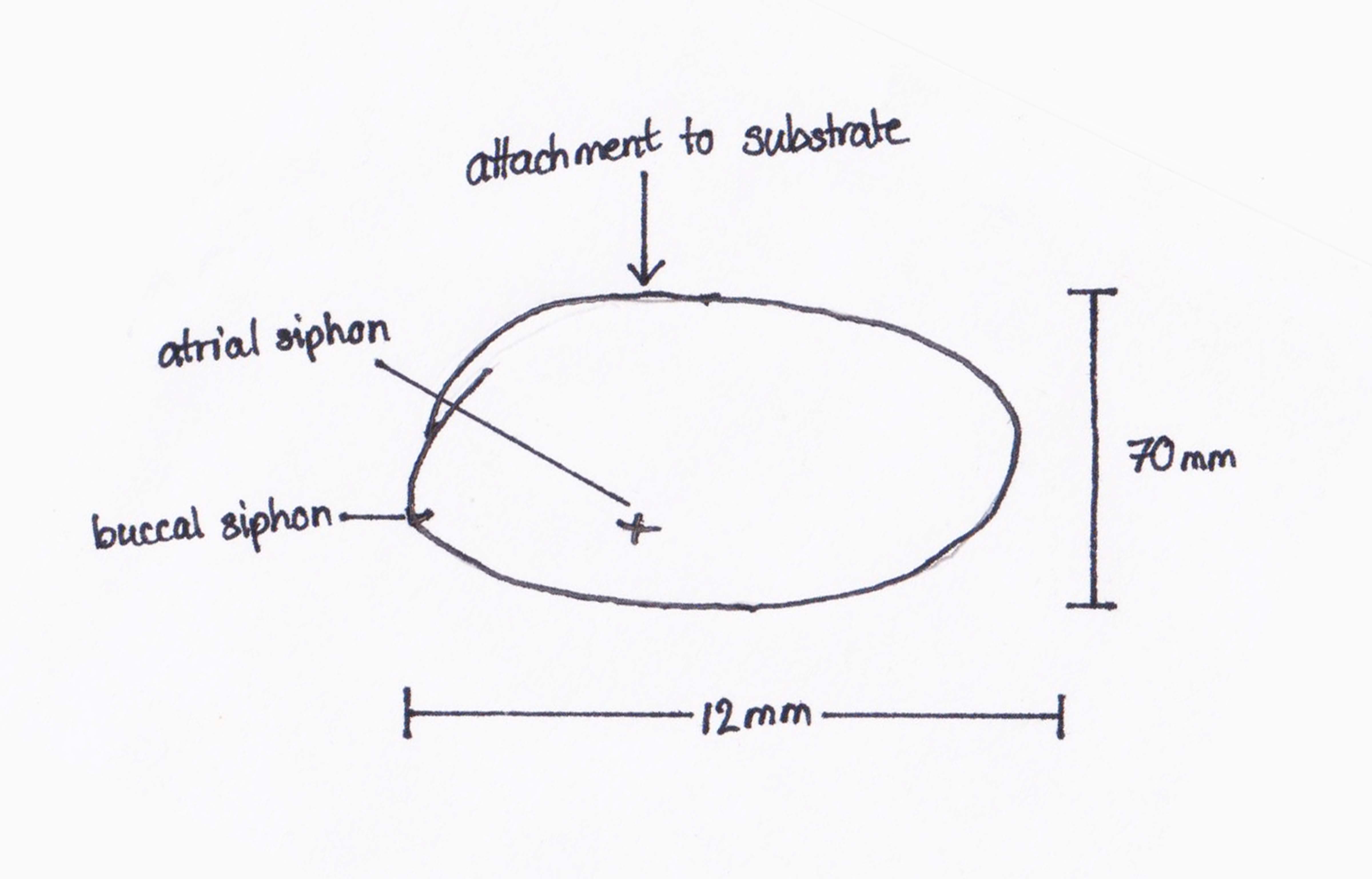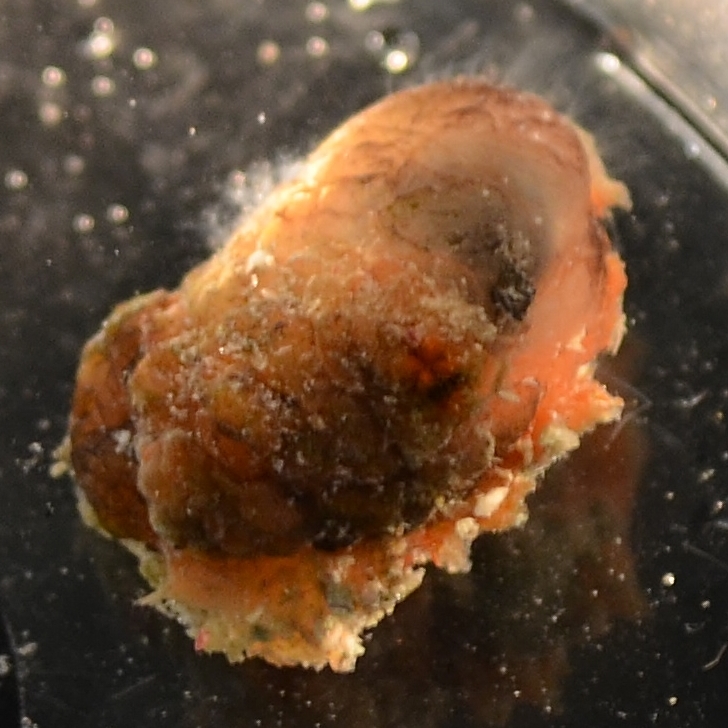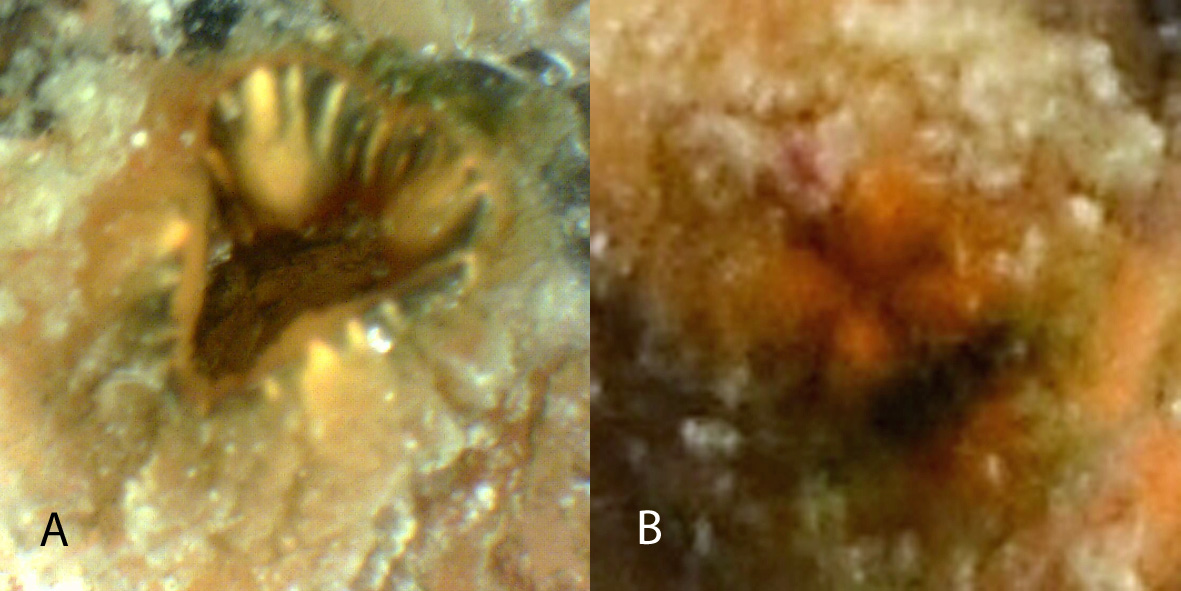Summary
Physical Description
Ecology
Life History & Behaviour
Anatomy & Physiology
Evolution & Systematics
Biogeographic Distribution
Conservation & Threats
References & Links | Physical Description
Pyura sp is a solitary ascidian that grows on hard substrate such as coral rubble. This ascidian is ovoid in shape with two siphons located in the upper surface of its body. The average size of the three specimens of Pyura sp found was 1.5 x 0.7 x 1cm (figure 1) . The body is covered in a thick leathery tunic covered in epibionts and has hair like structures that aid in adhering sand grains to the tunic (figure 2; Kott, 1989). Underneath the layer of sand and epibionts, the tunic is pink (figure 3). The inner surface of the siphons is dark brown with pale yellow stripes. The siphons have four lobes, as can be seen when closed (figure 4).

Figure 1. top down view of Pyura sp showing body shape, the location of the siphons (depicted closed) and attachment site.
%20(640x640).jpg)
Figure 2. Pyura sp. The tunic can be seen with hairs adhering sand grains and covered in epibionts for protection.

Figure 3. Pyura sp removed from the substrate with epibionts removed. The pink colour of the test can be seen.

Figure 4. Atrial siphon of Pyura sp A open showing pale yellow stripes and B closed showing 4 lobes.
Useful identification guides:
Kott, P., (1952) The ascidians of australia. I. Stolidobranchiata lahille and phlebobranchiata lahille. Marine and Freshwater Research, 3, 205-334.
Kott, P., (2005) Catalogue of tunicata in australian waters. Australian Biological Resources Study.
|
|